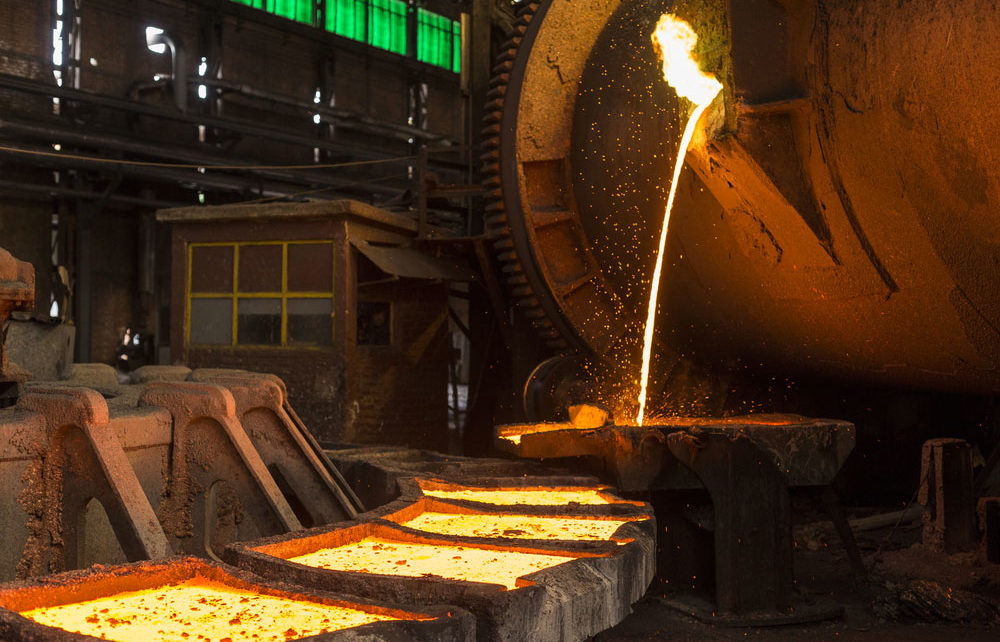Brazil´s supply of high-grade iron ore is still constrained, as demand from China rises owing to the Asian giant´s decarbonization effort.
According to S&P Global Market Intelligence, the Chinese steel industry aims to reach peak carbon emissions by 2025 and achieve a 30% reduction from the peak by 2030, in accordance with the country’s overall plan to achieve carbon neutrality by 2060.
The decarbonization push is expected to boost demand for direct feed iron ore products, that are directly charged to blast furnaces, emitting less pollution including carbon. The Tangshan government has embarked on a scheme to reduce emissions at 23 local mills by 30%-50% by the end of 2021 and other Chinese regions may adopt similar measures to reduce carbon emissions in future.
Brazil’s Exports to China Grow 36% by April, Boosted by Iron Ore
S&P Global Market Intelligence adds that “global iron ore supply will struggle to keep pace with demand”. “Major producers with operations in the low-cost mining hubs of Australia and Brazil are expected to dominate export growth, with a shift towards increasing supply of high-grade ore to help meet tightening carbon emissions standards in the global steel sector”.
Most of the seaborne supply growth, it adds, “should derive from restarts of shuttered capacity in Brazil, following the Brumadinho dam disaster in early 2019, and brownfield expansions”.
Vale’s first quarter iron ore production annualized to 327 million mt but the company is targeting 400 million mt/y at the end of 2022. The company continues to make steady progress on its operational stabilization and resumption plan. This has led to gradual restarts at Fábrica, Timbopeba and Serra Leste mines and at the Vargem Grande pellet plant.
Three additional beneficiation lines at Timbopeba will boost Vale´s capacity from 7 million mt/y to 12 million mt/y in the second quarter of 2021. Northern System mine supply is expected to rise by 24 million mt by 2023, with S11D increasing from 83 million mt in 2020 to 100 million mt from the second half of 2022, while the commissioning of the Gelado project will convert iron tailings into high grade products.
Itabira and Mutuca mines, however, are operating under temporary tailings disposal restrictions, despite Vale targeting 50 million mt of supply growth from mines in the Southern and Southeastern Systems by 2023.
“With Vale seeking to remediate numerous shuttered tailings dams, the supply recovery is constrained by difficulties in obtaining necessary safety approvals to reopen, amid Brazilian legislators’ heightened safety consciousness following two major disasters”, S&P adds.
Among other producers in Brazil, Samarco is targeting production at 7-8 million mt in 2021, before ramping up to 22-24 million mt in 2029. CSN plans to increase capacity at its Casa de Pedra mine from 30 million mt in 2020 to 108 million mt/y by 2033. The company is at fund-raising stage, helped by a recent IPO of its mining unit, and consequently will see most of the supply growth arriving post 2025.
In summary, S&P says, “restarts, brownfield expansions and replacement mines are expected to support global iron ore supply growth”. However, S&P Global Market Intelligence expects the market to remain in deficit in the medium term with supply growth hampered by steepening ESG hurdles and lack of greenfield projects, while demand is expected to rise as global steel production recovers from the 2020 low.
“The decarbonization drive in the steel industry is expected to reinforce the premiums of direct feed and high-grade iron ore, favoring miners with such options in their supply pipelines”, it adds.




